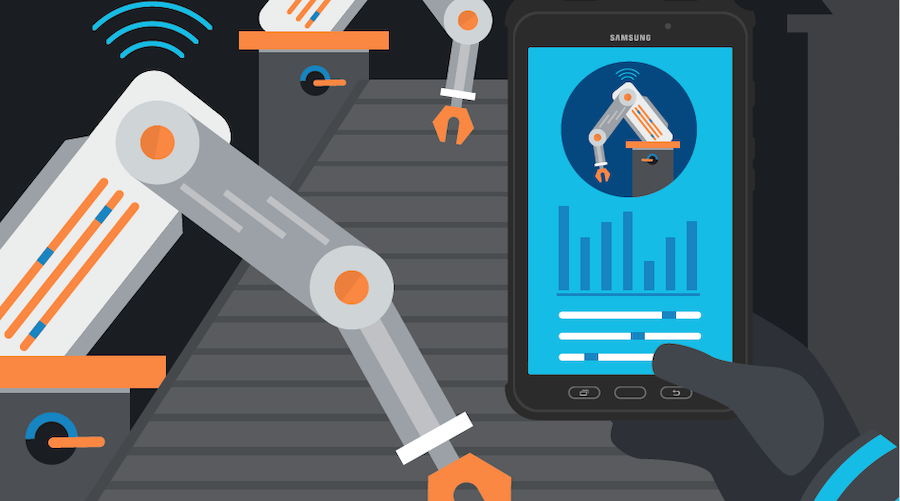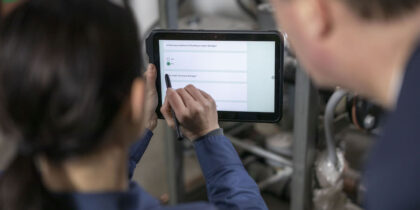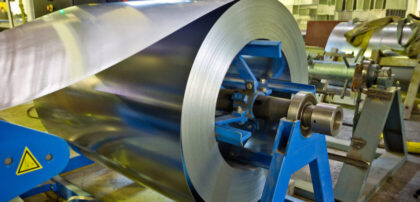According to Forrester, manufacturing firms are entering a world where the traditional barriers that separated customers, partners, suppliers and internal teams into silos no longer exist. All of these actors now operate in a dynamic ecosystem with customers at the center, dictating their needs and desires for others to follow.
Given that we’re on the cusp of this customer-centric approach, Forrester suggests that lean manufacturing will compel companies to re-examine their relationship with the customer and embed them more deeply in their internal processes. Manufacturing profitability will be driven by placing the digital core at the center of the Industry 4.0 revolution. And a customer-centric approach will demand agile, smart factories operating on a fully digitally connected system.
Here are five strategies that manufacturing companies can adopt to reduce costs, improve productivity and stay nimble in a new, customer-driven process.
Diversify Production
Here’s one way to build a customer-centric approach: Offer more product choices. The Forrester report suggests that since digitized processes lend themselves to more granular control, manufacturers should “tweak their operating model and build products customized to customer requirements with an acceptable lead time.”
Such granularity is forecasted to increase manufacturing profitability and asset ROI, but will also demand increased efficiencies all along the central nodes of the manufacturing processes — as you’ll see below.
Untether Asset Management
In the smart factory, information is vital currency, and embedded devices and equipment outfitted with sensors can deliver data that optimizes workflow processes. A smartphone such as the Samsung Galaxy Note9 can be docked with a handheld barcode scanner to track parts and supplies used to service and repair an asset.
Enterprise asset management software such as IBM Maximo can be outfitted onto rugged field-service mobile phones or tablets such as the Galaxy Tab Active2, and the robust processing power enables plant operators to handle all aspects of asset management on the shop floor without being tethered to a desktop at a central office. They can claim and check off work orders, complete service calls, and can even perform remote operations and asset monitoring for assets at different locations by logging into the company’s computerized maintenance management systems.
Plant operators can also use a mobile phone or tablet to review production units delivered by specific assets and any upcoming batch processes that might be on the horizon.
Get a Better Handle on the Supply Chain
A customer-centric approach to improving manufacturing profitability will likely further fragment the supply chain. This will necessitate tighter digital supply chain management. Barcode systems deployed on supplies, along with enterprise mobile data management, can provide supply chain managers with real-time information about asset and materials availability. This in turn can deliver efficiencies in small, custom-batch production.
Modernize Your Factory With Mobile
Get your free guide to the mobile technologies that will accelerate your smart factory journey. Download Now
As smart factories lean in on granularity in manufacturing, mobile devices can keep active, real-time track of the supply chain to handle procurement and forecast and schedule batch production processes efficiently.
Enable a Bird’s-Eye View of Data
Plant operators in a smart factory can add valuable data to production processes through live reporting on events. If a quality control issue arises, for example, floor personnel can shoot a video of the faulty production process and attach it as a file to the workflow process management software. Similarly, mobile devices can support employee training on the shop floor.
When an employee logs in through the enterprise production management software, an asset management scan can alert them to gaps in the completion of necessary training modules and deliver relevant videos in real time.
Lean manufacturing can also use embedded devices to sync with mobile device management (MDM) solutions to ensure compliance with OSHA inspection, safety and audit checklists.
Perform Real-Time Analysis
A true smart factory is one where data is used not only to fix processes by doing rear-view reporting, but also to gather data from Industrial Internet of Things (IIoT) devices to apply corrections and continuously adapt operations. Over time, machine learning enhances production processes to operate almost autonomously.
Predictive analytics increases manufacturing profitability by anticipating potential breakdown of assets and triggering real-time alerts of such possibilities. This avoids expensive downtime, which can cost $260,000 per hour, and increases efficiencies when granularity is key. Equally important, predictive analytics taps into Big Data sets gathered from embedded equipment and retrofitted sensors. A low-touch, machine learning system scans and processes this data and can be programmed to trigger alerts (such as a text to a plant operator’s phone) in case critical operating parameters are exceeded. This means plant operators don’t constantly need to measure temperature or pressure of operating equipment; they can rely on digital solutions to play the role of a critical ally on the plant floor.
Lean manufacturing enables companies to develop a customer-centric approach by delivering transparency across the board, from supply chain to production workflows.
Learn more about using mobile technology to modernize your factory with our free white paper.








